The Difference between CMYK and RGB Color Models
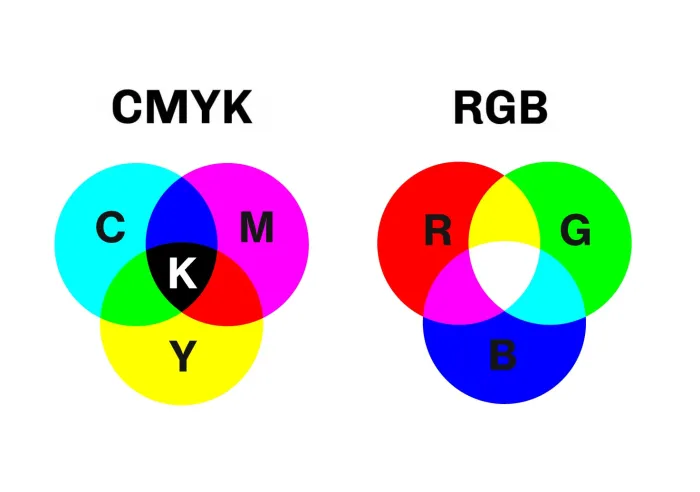
estimated reading time: 7 minutes
First of all, what is a Color Model?
A Color Model refers to a system for creating a range of colors
from a small set of base colors. Your first introduction to this concept was
probably in kindergarten when you learned about the simple RYB color model, which is
based on the primary colors of Red, Yellow, and Blue.
Even at 5 years old, it was easy to understand that mixing
Red and Yellow created Orange, mixing Red and Blue created Purple, and mixing Yellow and Blue created Green. Viola! You now had the traditional range of
colors from which to create fingerpaint masterpieces.
Though we might not have realized it, by the time many of us
learned about RYB in kindergarten we had already been regularly engaging with media
created by two other important color models - RGB and CMYK.
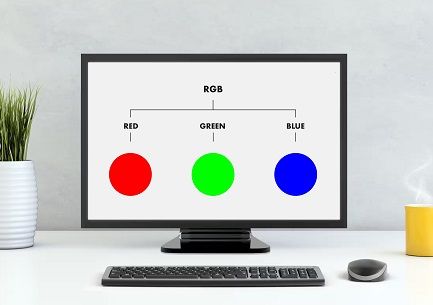
What is the RGB color model?
The primary colors of the RGB color model are Red, Green, and Blue. These are the colors that correspond to the three types of cone cells in our retinas that detect different wavelengths of light.
Long wavelengths of
light are interpreted by our brains as being the color Red, medium wavelengths
of light are interpreted as the color Green, and short wavelengths of light are
interpreted as the color Blue.
A huge gamut of colors can be created by combining Red, Green, and Blue light in various combinations of intensity. In turn, these different
colors of the spectrum are perceived by the brain based on the mix of long
(Red), medium (Green), and short (Blue) wavelengths they contain.
Because the RGB color model is used in light-based systems,
it is the reason we are able to view colorful images and videos on the screens
of electronic devices, such as computers, tablets, and cell phones. Anything
intended to be viewed online, such as graphics for digital marketing, web pages,
or social media profiles, must use the RGB color model.
RGB: Pixels and Sub-Pixels
When computers and cell phones are off, their screens are dark. When these devices are powered on, the screen becomes illuminated with thousands of tiny boxes of light called pixels.
A "pixel" (short for picture
element) is the smallest component of any digitally displayed content. Arranged
in a grid formation, pixels are the fundamental building blocks of digital images.
Within each pixel are three different types of sub-pixels. Each sub-pixel is able
to emit a wavelength of light. And you guessed it - one kind of sub-pixel emits a long wavelength
of light (Red), another sub-pixel emits a medium wavelength of light (Green), and the third
emits a short wavelength of light (Blue).
If you refer to the magnified photo of the Blue eye, you will see an extreme
close-up of the sub-pixels on a computer screen showing as Red, Green, and Blue.

On an electronic device, the three colors of RGB can be
displayed in intensities from 0 to 255. For example, if the Red sub-pixel is
set to its maximum value of 255 and the Green and Blue sub-pixels are both
turned off (255, 0, 0) the pixel will show as pure Red. Likewise, a
setting of 0, 255, 0 will produce a pure Green pixel and a setting of 0, 0, 255
will produce a pure Blue pixel.
Of course, changing the intensity of the three light colors to
any value within the range of 0 and 255 will produce thousands upon thousands
of other pixel colors. For example, Cyan can be created by setting Blue and Green
to full value and turning off Red (0, 255, 255).
Likewise, Magenta can be created by setting Red and Blue to full
value and turning off Green (255, 0, 255) and Yellow can be created by setting
Red and Green to full value and turning off Blue (255, 255, 0).
When Red, Green, and Blue are all set to their maximum value (255, 255, 255), this yields the color White. Conversely, when Red, Green, and Blue are all turned off (0, 0, 0), this represents Black (the absence of light). As such, we see a dark screen.
Having different colored pixels, all bumped up against each
other, is what forms the vibrantly colored images we see on our computer
monitors, cell phone screens, and other digital displays.
Also, by increasing the intensity of the light we add to the
pixels, the brighter and richer images will become. This is why RGB is known as
an "additive color model", because we are adding different light from the spectrum
together to attain other visible colors.
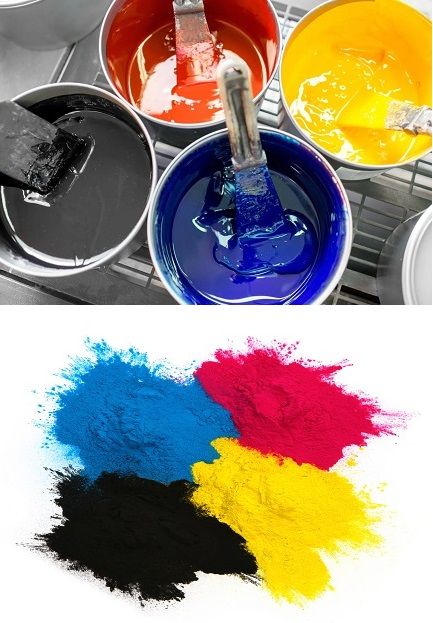
What is the CMYK color model?
Unlike a computer monitor or cell phone screen, a piece of paper cannot generate its own light source. Instead, paper must rely on reflected light.
Hence, the pigments and inks used to create printed materials such as
books, brochures, magazines, postcards, and posters do not use the RGB color
model.
Instead, the printing industry uses the CMYK color model. The
primary colors of the CMYK color model are Cyan, Magenta, and Yellow. Black (K)
is also included in this color model to provide depth and contrast.
The printing process starts off with sheets of blank paper. Prior
to receiving any ink or toner pigments, the blank paper reflects all
wavelengths of light equally. Since White is the sum of all visible colors of
light, our brain perceives the paper to be White.
Though electronic devices can add different wavelengths of
light to create colors, a sheet of paper has no light source of its own. As
such, the toner or ink used in the CMYK color model is applied to the paper sheet
to absorb various wavelengths of light reflecting off of it.
This subtracts out certain colors of the spectrum so that only
the desired colors reflect off the sheet into our eyes. As such, CMYK is known
as a "subtractive color model" because it starts with White light and then
subtracts out portions of it to achieve various other colors.
CMYK: Dots instead of Pixels
As the paper, cardstock, or other substrate moves through a
printing press, the four CMYK ink colors - Cyan, Magenta, Yellow, and Black - are
applied one after the other. The order of when Black is applied can sometimes change
but the CMY colors are almost always applied in the same order.
Each of the four CMYK colors are assigned a value of 0% to 100% when building colors within an artwork layout. These percentages are used to indicate the mix of CMYK ink colors needed to yield a particular color when printing. For example, C=0%, M=100%, Y=100%, K=0% will create a Candy Apple Red color and C=0%, M=69%, Y=100%, K=68% will yield a Chocolate Brown color. A value of 0% for all four CMYK colors represents White (the underlying sheet) while a value of 100% for all components creates the deepest Black (which is known as Registration Black).
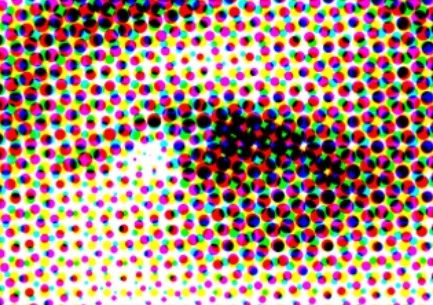
The printing press applies each layer of color as tiny dots
of ink (or toner). See the magnified photo of the Brown eye. These dots are applied in successive layers; overlapping portions
of the white paper but also overlapping some of the other ink dots that have
been applied.
Just as the RGB color model merges various intensities of Red,
Green, or Blue light to induce the brain to perceive thousands of other colors,
the size and relative placement of the Cyan, Magenta, Yellow and
Black dots on the printed sheet also tricks the brain into perceiving thousands
of different colors.
Whereas RGB colors will get brighter as more light is added,
CMYK colors will get darker as more ink or toner is applied. Also, when we look
at something that has been printed with the CMYK process, we see colors that
are solid and continuous. We can only see the individual dots if we view the
printing under heavy magnification.
The subtractive color model of CMYK cannot produce as many
colors as the additive color model of RGB, nor can it achieve as many bright
colors. However, CMYK results in very eye-pleasing color for print materials.
As such, CMYK is the printing industry standard for creating full-color printing.
RGB for Digital Content, CMYK for Printed Content
The main takeaway from this article is that the RGB and CMYK
color models operate on completely different principles for generating colors. Hence, these two systems are not interchangeable.
The RGB color model is used when creating media that will be presented in digital form -
such as websites, banner ads, and other digital communications that will
display on a computer, cell phone, or other electronic devices. The CMYK color
model is used when creating materials that will be printed - such as books, brochures, flyers,
magazines, posters, and postcards.
Hence, any image files being created for display on an
electronic device must use RGB colors and any image files created for printed
output must be set up in CMYK.
It is important to note that any images submitted for printing in RGB mode will be converted
to CMYK prior to printing, which may yield a result you weren't expecting. If
in doubt, check with your printer beforehand about their preferred file settings and/or consider getting a hard
copy proof for any color sensitive projects.
Color Vision is always ready to help!
If you have any questions about CMYK vs RGB or any other
print-related topics, get in touch with Color Vision Printing.
Our professional and experienced staff is always ready to
serve you. Plus, you'll be pleased with our affordable prices for printing, finishing, and binding.
We are always happy to discuss your projects, so give us a
call at 800-543-6299. Or, if you already know your specs and would like a
price quote, just fill out our easy Quote Request form and we will send
you a quote by email.
As always, we look forward to assisting you!
Related Article: Why is the color Black designated by the letter "K" in CMYK?
Related Articles
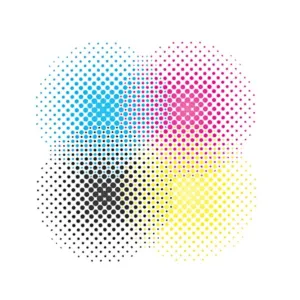
Commercial Printing: What does “Halftone” mean?
Read This Article

The Difference between CMYK and RGB Color Models
Read This Article

Printing Ink: What does “Heavy Coverage” mean?
Read This Article
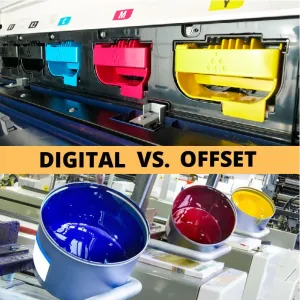
Which Process is Better? Digital Printing vs Offset Printing
Read This Article